Fake reviews and testimonies exist on all platforms. You may have even been manipulated by them once or twice during your time on the internet.
It can even be tempting to create your own fake reviews as a business owner.
In this post, we discuss what fake reviews are, whether or not you should use them, and how to spot them (including tools!).
Let’s get started!
Types of Fake Reviews
Let’s talk about the types of fake reviews you’ll run into across the net before we get into the meat of this article. And yes, there are types of fake reviews.
They can be divided based on their sentiment: positive or negative.
This is important to note as when we think of fake reviews, we mostly think of the 5-star, jargon-filled testimonials written by business owners themselves, but that’s only a portion of the internet’s collection of phony opinions.
In reality, businesses deal with fake negative reviews as well, even businesses who don’t use fake reviews at all.
These types of reviews are often written by bad actors. Offenders may include competitors as well as general consumers desperate to tarnish your reputation.
With all that out of the way, let’s take a deep dive into fake reviews, starting with whether or not your business should partake.
Should You Use Fake Reviews?
The short answer to this question is no, you should not use fake reviews to improve your business’ reputation.
The moment you publish a fraudulent testimony to a review platform is the moment you lose all credibility as an authentic, ethical business.
Just ask yourself: would you feel good receiving praise, a higher rating and even awards you didn’t earn?
Plus, once fake reviews are out there, they’re out there. You can’t remove them without raising suspicion among potential customers and even the algorithms of the platforms you published them on.
Your reputation may take a dive every now and then, and you may even hit a few review slumps. Regardless, that doesn’t mean you should manipulate your ratings and harm the relationship you’ve built with your customer base.
Speaking of your customers, they are able to tell when your business or product has fake reviews attached to it.
They’re not always obvious, but the use of specific terms and sentiments will definitely make potential buyers suspicious.
You risk losing them as a customer, or worse, having them leave a bad review in retaliation.
Are Fake Reviews Illegal?
This is the biggest issue with using fake reviews.
Different states, regions and jurisdictions have their own laws for this practice, but what we know for sure is that fake reviews are a direct violation of the Federal Trade Commission (FTC), specifically Title 15 of the United States Code.
This code states:
“Unfair methods of competition in or affecting commerce, and unfair or deceptive acts or practices in or affecting commerce, are hereby declared unlawful.”
If you scroll down toward the bottom of the code linked above, you’ll find the penalty for violating it: a $10,000 fine per violation, or a $10,000 fine per fake review.
It’s not clear how likely you are to face a trial with the FTC or get caught posting fake reviews.
What is clear is how seriously the entity takes this practice, so much so that they’ve published a detailed guide on “endorsements and testimonials in advertising.”
Legal issues aside, publishing fake reviews on platforms like Google, Facebook and Yelp is a direct violation of each platform’s terms of service.
Here’s a direct quote from Google’s review policy explaining how the platform views fake reviews and how it’ll remove flagged content and content it finds to be fraudulent or spam:
“Contributions to Google Maps should accurately represent the location in question. Where contributions distort truth, we will remove content. This includes reviews…
…Reviews are automatically processed to detect inappropriate content like fake reviews and spam. We may take down reviews that are flagged in order to comply with Google policies or legal obligations.”
The policy also contains guidelines for the way reviews should be posted.
Basically, your review should accurately represent the location you’re reviewing, and you should not post duplicate content across the platform:
“Your content should reflect your genuine experience at the location and should not be posted just to manipulate a place’s ratings. Don’t post fake content, don’t post the same content multiple times, and don’t post content for the same place from multiple accounts.”
To sum up, fake reviews are a bad idea that will likely cause more problems than they solve.
So, why do businesses keep using them, and why do honest businesses receive them?
Why are Fake Reviews Such a Problem?
Cybersecurity company CHEQ commissioned economist professor Roberto Cavazos to conduct a study on fake reviews and their influence on global commerce.
The study found that fake reviews led to $152 billion of consumer spend globally in 2021 alone.
The majority of this money was spent in the US, the UK, Australia, Japan and Canada and was spent in the following categories:
- Fashion
- Beauty and personal care
- Entertainment
- Furniture and homeware
- Electronics
- Travel
This figure alone explains why so many businesses resort to fake reviews, and it all boils down to one thing: social proof.
The power of social proof should never be underestimated. It’s a social phenomenon that explains how we’re more likely to partake in something after witnessing others do it.
It plays a huge role in commerce, explaining how online reviews are so influential.
In fact, according to a study published by ReviewTrackers, 94% of consumers report being influenced by online reviews.
Plus, in a separate study by BrightLocal, 94% of consumers reported being more likely to use businesses that have positive reviews.
As such, businesses need online reviews, and they need to be positive.
Local search engines like Google also look for how often you receive reviews, the sentiment of reviews, and whether or not your reviews contain keywords related to your industry.
It’s these local SEO ranking factors that lead so many businesses to resort to publishing fake reviews for their own benefit.
Fake reviews help businesses achieve higher average review ratings, earn higher rankings in local search, get through review slumps and combat negative reviews.
Other Problems with Fake Reviews
A huge problem aiding and abetting the rise of fake reviews is the fact that many websites and review platforms don’t verify whether or not the people leaving reviews are actual customers.
This is something Amazon gets right despite numerous claims alluding to their fake review problem.
When you review a product you purchased on Amazon on that product’s actual Amazon page, you’re assigned a badge that reads “Verified Purchase.”
This little tag lets everyone know you spent your own money on the product and are, therefore, likely not being paid to write the review.
What Amazon gets wrong is not requiring you to have a verified purchase in order to review a product.
This is how even the world’s largest ecommerce giant falls victim to the allure of fake reviews. They have a system in place to combat them, but their open review policy leads to more engagement and website traffic.
The other side of the coin is review bombing or even receiving a handful of fake negative reviews.
“Review bombing” is an online harrassment tactic used to tarnish a business or entity’s reputation. It’s usually deployed in response to business strategies consumers deem corrupt or political statements and affiliations that go against what’s widely accepted.
An example would be the large number of negative reviews video game developer Bethesda received for their video games The Elder Scrolls V: Skyrim and Fallout 4 in 2015 and again in 2017.
The dramatic uptick in negative reviews were triggered by announcements made by fellow video game company Valve (2015) and Bethesda themselves (2017) in which the companies released plans to launch paid modifications (mods) for Skyrim and Fallout.
Mods had always been made by fans of the games up until that point, and they were always free.
In retaliation to what many considered cash grabs, players flooded review platforms with negative reviews of Bethesda’s latest video game titles in hopes of sending a message to the studio, and it worked.
Plans to release paid mods were dropped shortly after.
This is just one example of how you may not be in control of the fake reviews left for your business.
Lastly, fake reviews, while rare, may be left by competitors.
Like review bombing, this tactic is designed to wipe out the competition, one fake negative review at a time.
It’s unethical, but it’s a shady strategy businesses use to get ahead of the competition in local search.
How to Spot Fake Reviews
Okay, so by now you know that you shouldn’t use fake reviews, and you may fall victim to harassment tactics that utilize them.
How can you spot fake reviews to flag for removal or reviews you read as a consumer yourself?
Well, there are a few techniques you can use. They’re not surefire, but they can point to signs of potential phony testimonials.
The first is a review that’s only positive or only negative and has a few sentences. Typically, reviews of these natures are short.
If a reviewer took the time to write a detailed testimony but only provided all praise or all criticism with no in betweens, they may not be legitimate.
The second is a review published before a product is released or before a business has launched.
While these reviewers may have received advanced copies, they’re more likely providing opinions on something they’ve never even touched.
The third sign doesn’t have to do with a review. Instead, it has to do with the reviewer themselves. If you’re suspicious of a review, view the author’s profile to see what other types of reviews they’ve written.
Chances are you may find a barren profile or a profile filled with spam.
For the fourth sign, be on the look out for industry-specific terms or jargon only industry professionals would use.
This is a dead giveaway of a review written by a business’ owner themselves.
The fifth red flag involves negative reviews in which a competitor is recommended instead.
Again, this is not a surefire way to determine whether or not a review is fake. Consumers may simply want to steer other consumers in the right direction.
Even so, be cautious of these types of reviews.
Sixth, watch out for reviews written by usernames rather than first-and-last type names. Spammers and frauds may hide behind fake usernames with no profile pictures.
For the last sign, be weary of poorly-written reviews with bad grammar, all capital letters and a lot of exclamation points.
It’s already hard to take genuine reviews of this nature seriously. They’re even worse if you suspect they’re fake.
If you’re wondering where you may find fake reviews, Professor Cavazos’ study uncovered data on the number of fake reviews on a handful of platforms:
- Google – fewer than 0.5%
- Amazon – less than 1%
- Yelp – 8%
- Tripadvisor – 0.6%
- Trustpilot – 5.7%
3 Tools That Identify Fake Reviews
1. Fakespot
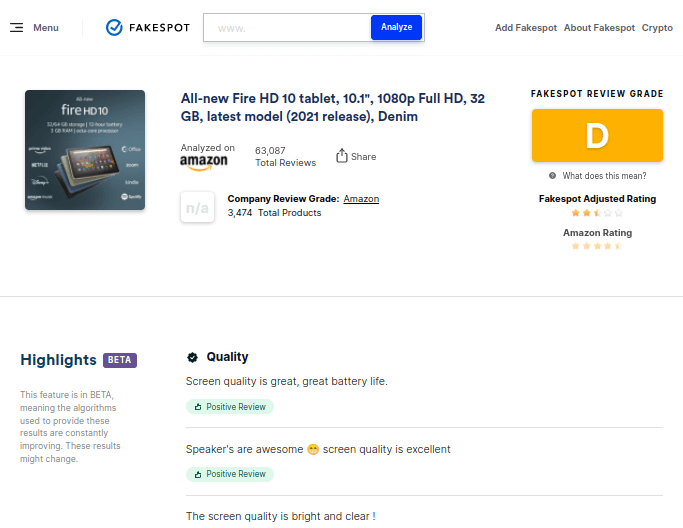
Fakespot is a browser extension and mobile app that detects fake reviews on Amazon, eBay, Best Buy, Walmart, Shopify and Sephora.
The tool works with Chrome, Firefox, iOS and Android.
It grades products based on the number of fake reviews it detects for each with F being the worst grade a product can receive.
As a shopper using the tool, you can show or hide all F-graded products and sort products by grade.
Fakespot will even analyze individual product pages, deliver reports and flag unsafe sellers.
2. ReviewMeta
ReviewMeta detects fraudulent reviews on Amazon exclusively.
You can use it without installing it by entering any Amazon URL on its website, but it also has smartphone apps and browser extensions.
The tool outputs a report on the product you want to analyze, showcasing the product’s actual total score along with its most and least-trusted reviews.
3. TheReviewIndex
TheReviewIndex is a web-based tool and browser extension.
It detects fake reviews on Amazon, Steam and Flipkart.
It provides a summary of products and customers’ sentiments toward specific features.
Fake reviews are included in these summaries.
Final Thoughts
What happens if you become the victim of a review bombing scheme? What if your competitor leaves negative reviews on your pages?
Your first step should be to report such reviews. Your pleas may fall on deaf ears, but it’s important to try.
If you have control over your reviews, delete any you feel are fraudulent. Just don’t get into the habit of deleting every negative review. Your customers will know.
Unfortunately, review platforms are not liable for content posted to their websites due to Section 230 of the Communications Decency Act of 1998.
Still, consult a lawyer about your legal options if the situation is severe.
And if you’re tempted to use fake reviews, do this instead:
- Get more reviews by asking customers to share their feedback with you (Starfish Reviews is great for this!)
- Respond to reviews, especially negative reviews
- Improve your product and customer service
Authenticity takes more work, but you’re much more likely to make it through slumps and harassment campaigns scarred but generally unscathed than businesses who manipulate their customers deliberately.




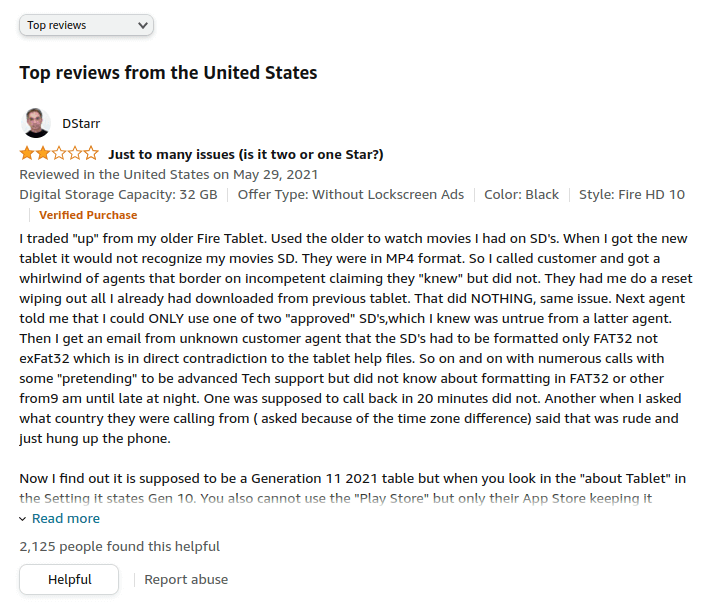
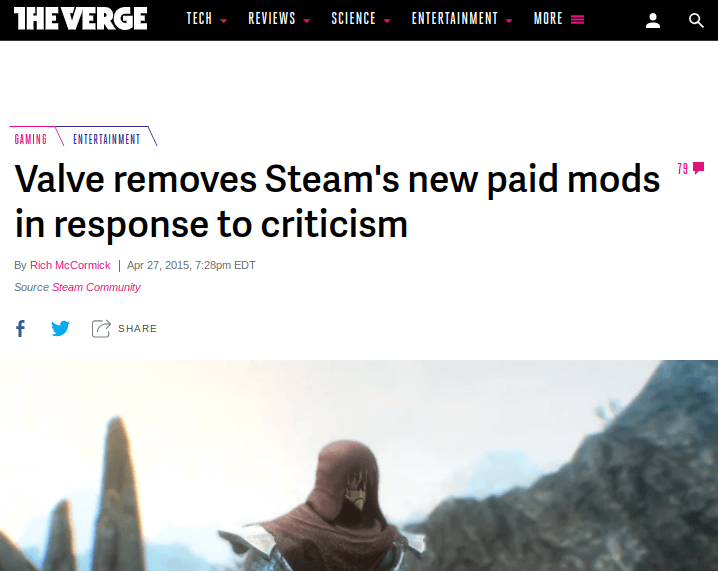
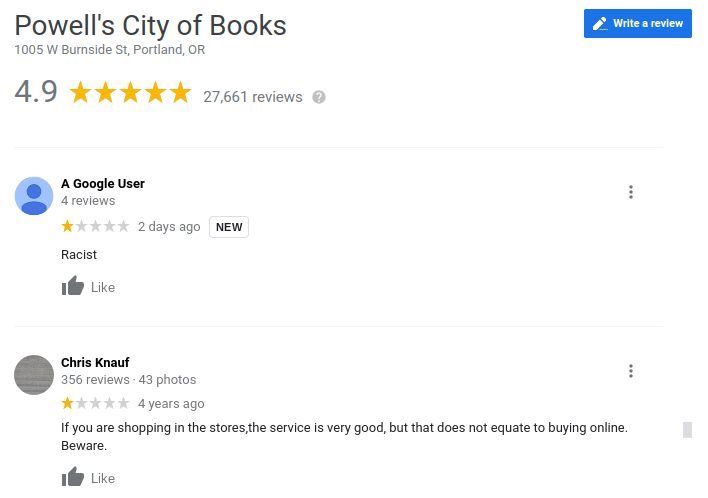
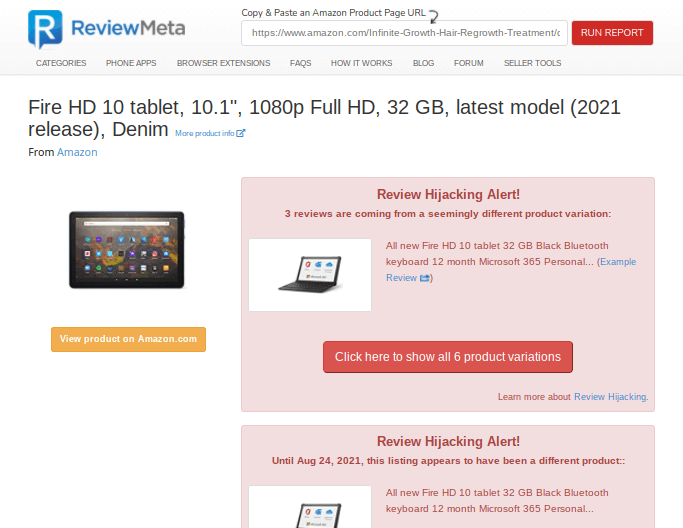
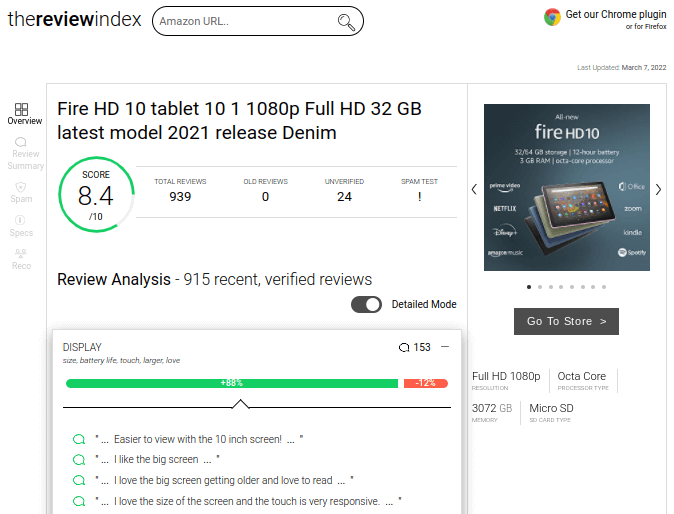




0 Comments